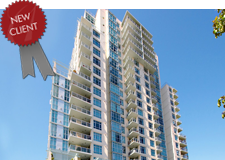*New Case Law
Collecting delinquent assessments remains one of the more challenging and frustrating aspects of a homeowners association’s (“HOA’s”) operations. Once a delinquent file is forwarded to a HOA’s collection company or law firm, industry practice has been to reject any partial payments made by the delinquent homeowner (i.e., to reject any payments that do not cover all of the delinquent assessment amount, including late fees, interest, collection costs, etc.) that have accrued on the homeowner’s account. That approach has been based upon the language set forth in Civil Code Sections 5655 and 5720. Civil Code Section 5720 allows for a HOA to foreclose on a delinquent assessment lien only where the delinquent assessment amount is $1,800 or greater, or are more than 12 months delinquent. Civil Code Section 5655, however, sets forth the way in payments made by a delinquent homeowner must be allocated (i.e., first to the delinquent assessment amount, then to collection fees, late charges, etc.).
Accordingly, if a homeowner is allowed to make a series of partial payments that must first be applied to the delinquent assessment amount, the homeowner could structure a way in which to avoid foreclosure of his property (i.e., through keeping the delinquent assessment amount under $1,800 or under 12 months delinquent), while not paying all or any of the amounts necessary to cover the HOA’s collection fees and costs it has incurred in connection with the homeowner’s delinquency. This would ultimately place the HOA in a difficult position of having to incur more collection fees and costs solely to collect the unpaid collection fees and costs which the HOA has already incurred. Thus, collection companies and firms have traditionally rejected partial payments in order to avoid this problem–especially in light of the absence of any language in the Civil Code explicitly requiring HOAs to accept partial payments. If the homeowner desires to provide partial payments, the only opportunity to do so would be pursuant to a payment plan executed between the homeowner and the HOA.
However, a recent decision from the Fourth District, Division Three, of the California Court of Appeal has indicated that HOAs do indeed have an affirmative obligation to accept partial payments notwithstanding the concerns referenced above…
Continue Reading ›

 HOA Lawyer Blog
HOA Lawyer Blog


 We are proud to announce that Discovery at Cortez Hill Homeowners Association has selected Tinnelly Law Group as their associations’ legal counsel.
We are proud to announce that Discovery at Cortez Hill Homeowners Association has selected Tinnelly Law Group as their associations’ legal counsel. *Asked & Answered
*Asked & Answered We are proud to announce that Antigua Owners Association of Monarch Beach has selected Tinnelly Law Group as their associations’ legal counsel.
We are proud to announce that Antigua Owners Association of Monarch Beach has selected Tinnelly Law Group as their associations’ legal counsel. *New Legislation
*New Legislation
 *New Legislation
*New Legislation We are proud to announce that Jacaranda I & II Maintenance Corporations have selected Tinnelly Law Group as their associations’ legal counsel.
We are proud to announce that Jacaranda I & II Maintenance Corporations have selected Tinnelly Law Group as their associations’ legal counsel. Most every set of Homeowners Association (“HOA”) CC&Rs contain a provision prohibiting conduct which constitutes a “nuisance.” That conduct often includes “noxious, illegal or offensive activities,” anything which “unreasonably interferes with a resident’s right to quiet enjoyment” and/or “endangers their health or annoys or disturbs” them. We have blogged about how such nuisance provisions may be employed to resolve issues such as the
Most every set of Homeowners Association (“HOA”) CC&Rs contain a provision prohibiting conduct which constitutes a “nuisance.” That conduct often includes “noxious, illegal or offensive activities,” anything which “unreasonably interferes with a resident’s right to quiet enjoyment” and/or “endangers their health or annoys or disturbs” them. We have blogged about how such nuisance provisions may be employed to resolve issues such as the  We are privileged for the opportunities we have to build relationships with our HOA clients throughout the state of California. We are humbled when board members and managers take the time to express their appreciation for the work we provide to their communities:
We are privileged for the opportunities we have to build relationships with our HOA clients throughout the state of California. We are humbled when board members and managers take the time to express their appreciation for the work we provide to their communities: